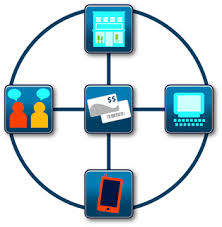 In Africa’s complex retail environment, even companies poised with the right products can miss the mark if they don’t get them to the right place—a challenging task in Africa’s fragmented markets. But since a few outlets can account for signficant sales, tailoring distribution choices by specific products can help improve sales.
In Africa’s complex retail environment, even companies poised with the right products can miss the mark if they don’t get them to the right place—a challenging task in Africa’s fragmented markets. But since a few outlets can account for signficant sales, tailoring distribution choices by specific products can help improve sales.
To better understand Africa’s largest consumer goods market, Nielsen analyzed recent sales for a range of products in Nigeria. Over the course of six months, the highest-selling new product was made available to 65% of a retail universe of 745,000 outlets. Comparatively, the next nine best-selling products were available in just 30% of these outlets.
However, the bottom 40 products failed to reach even 10%. Over a longer time frame, research also showed that those brands with declining sales two years after launch were often those that had failed to improve distribution continually—in contrast to those with still growing sales that enjoyed ever-higher reach. It may of course be the case that weak demand for some of the products contributed to weak distribution, but the distribution challenge remains clear.
Based on these scenarios, it’s clear that companies need to identify the best channels and retailers for a given product category. In Lagos, for example, laundry detergents are present in no fewer than 100,000 outlets, an impossibly large number for manufacturers to reach. But with the knowledge that 35,000 of these outlets account for 80% of sales and just 10,000 produce 50% of sales, companies have a much more manageable range to evaluate. And laundry detergents aren’t the only category that benefits from this distillation. Similarly, in the same city, 61,000 outlets sell beverages, but 24,000 of them generate 80% of sales.
Still, companies need to analyze the distribution and turnover of particular categories of goods together with a long list of characteristics relating to a vast number of outlets. Manufacturers of food and drinks, for example, need to ascertain not just the type, location and opening hours of many thousands of outlets in a given country, including supermarkets, grocers, kiosks, and tabletops, but also crucial details such as access to power and water, the presence of a storeroom, and refrigeration facilities. Simply knowing which outlets have a refrigerator can transform the business of a purveyor of cold drinks.
Getting at this level of detail is the only way to start building effective distribution. With the right data on outlets and channel clusters, manufacturers can identify the best locations for their products, and even offer specific formats and sizes of product to meet the needs of shoppers at individual stores. They are thus able to optimize their supply chains, improve availability, trim waste, eliminate unnecessary costs borne by consumers and, in the longer term, strengthen the whole market.
For additional insight, download Nielsen’s Africa: How to Navigate the Retail Distribution Labyrinth report.


